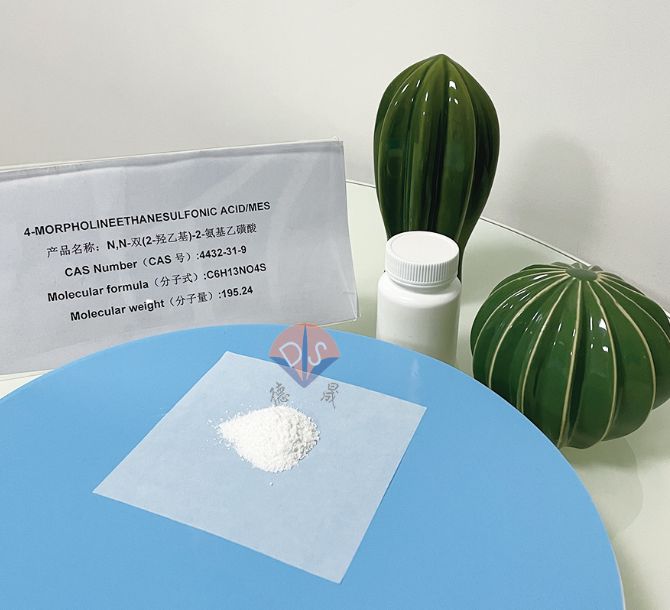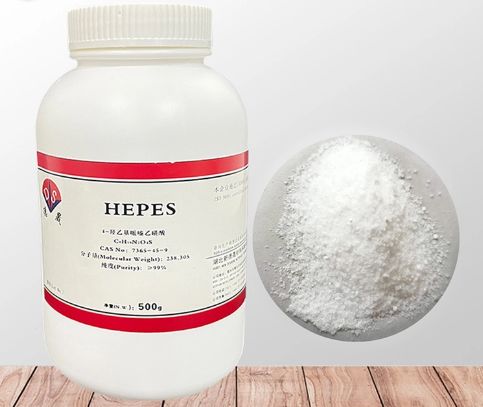Choosing the wrong buffer, the experiment was in vain! Here are 5 steps to help you easily cope
Release time:
2025-11-10
The selection of buffering agents is a crucial step in experimental design, directly affecting the accuracy and reproducibility of experimental results. Choosing the wrong buffer, the experiment was in vain! The following is a detailed process for buffer selection, covering key considerations and operational steps.

Determination of target pH range
The first step in selecting a buffer is to determine the pH range required for the experiment. The core principle is that the pKa value of the buffer should be as close as possible to the target pH, usually controlled within the range of pKa ± 1. For example, Tris is suitable for the pH range of 7.0-9.0, as its pKa is approximately 8.1, which can effectively maintain a neutral to weakly alkaline environment. When determining the pH range, the sensitivity of the experimental system also needs to be considered.
Screening of buffer types
Select appropriate buffer types based on experimental types and requirements. Different buffer solutions have different chemical properties and applicable scenarios. For example, phosphate buffered saline (PBS) is suitable for cell culture because it is similar to the physiological environment; HEPES buffer is more suitable for open system cell culture as it is insensitive to changes in CO2 concentration. When screening, it is necessary to evaluate the advantages and disadvantages of each buffer, including its buffering capacity, temperature sensitivity, and compatibility with the experimental system.
Concentration and toxicity assessment
The selection of buffer concentration requires a balance between buffering capacity and potential toxicity. Low concentration may lead to insufficient buffering capacity and inability to effectively maintain pH stability; If the concentration is too high, it may introduce osmotic pressure problems or cell toxicity. For example, when DMSO is used as a cryoprotectant, its concentration needs to be strictly controlled to avoid cell damage. When evaluating toxicity, the effects of buffer components on cell membrane, protein activity, and enzyme function should be considered, and a buffer system with good biocompatibility should be selected.
Matching of experimental conditions
The selection of buffering agents also needs to consider specific experimental conditions, including temperature, ion strength, and coexisting reagents. The pKa values of certain buffering agents vary significantly with temperature, for example, the pKa of Tris decreases by about 0.03 units for every 1 ℃ increase, which is particularly important in temperature sensitive experiments. In addition, buffering agents should not have adverse reactions with other reagents in the experiment, such as metal ion chelating agents that may affect enzyme activity dependent on metal ions.
Preparation and validation of buffer solution
After selecting the buffer type, it is necessary to prepare it according to the standard procedure. The preparation process includes four key steps: first, select the buffer and calculate the acid-base ratio based on the pH calculation formula of the buffer solution; Then calculate the required acidity and alkalinity; Then accurately weigh or measure the reagent; Next, prepare according to the laboratory standard operating procedures. After preparation, the actual pH value should be verified through a pH meter. For high-precision experiments, it is also necessary to test the stability of the buffer under experimental conditions, such as temperature changes or pH changes after long-term storage.

The scientific selection of buffering agents is a systematic engineering process that requires comprehensive consideration of various factors such as chemical principles, biocompatibility, and experimental conditions. Through a rigorous selection process, the stability of the experimental environment can be ensured. Hubei Xindesheng focuses on the research and production of biological buffering agents, providing dozens of buffering agent products including HEPES, Tris, MOPS, etc. The company adheres to advanced production processes and strict quality control systems to ensure that the purity and stability of each batch of products meet customer requirements.
Previous page
Previous page
Contact details
Contact number
Address: C8, Guanggu United Science and Technology City, Ezhou City, Hubei Province
Fax:0711-3704 589
Follow us



